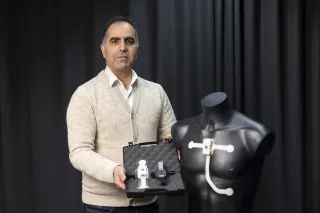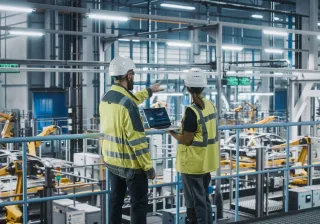The BRTA alliance, which aggregates various research institutes in the Basque Country, launched an international advisory council in September 2023. VTT’s professor of practice Riikka Virkkunen has been appointed in the council. The central objective of the council is to support BRTA’s strategy work for the years to come.
BRTA was founded in 2019. It consists of 17 research organizations and over 4000 employees. This alliance looks to identify best practices in order to add value to its member organizations, to the industry in the region, as well as to the society as a whole. As a comparison: VTT was founded in 1942 and currently employs some 2200 research professionals. BRTA’s and VTT’s ways of working are quite different from each other. Unlike BRTA, VTT is an established and uniform organization.
“It is interesting to get to know various kinds of organizations, which are in different phases in their evolution. Despite the differences and also because of them we have a lot to share with each other. At the same time we can create new relationships and strengthen our brands”, tells VTT’s professor of practice Riikka Virkkunen, who was recently appointed to BRTA’s advisory council.
BRTA’s operations are closely connected to the strong industry of the Basque Country. It seeks to support the industry by identifying new business opportunities. Its 17 research and technology organizations operate in many industry domains and are of different sizes: the number of employees ranges from dozens to thousands. Some institutions are privately owned, others public. The biggest organization is Tecnalia, which has a long history in partnering with VTT.
Independent research organizations seek for synergies in their operations
At first BRTA’s member institutions did not really know each other nor others’ industry domains. The co-operation between institutions was kicked off by writing joint strategic white papers on central topics such as smart manufacturing, energy transition, healthy food, and personalized health. At the moment they plan also joint practices related for example to technology transfer, career paths, and secondments to other institutes. BRTA’s goal however is not to become one uniform institute. Different organizations will remain somewhat independent units also in the future.
“My appointment to the BRTA advisory council is for three years. During that time together with my fellow advisors we aim to support the alliance in building its strategy for the years to come. We will discuss for example ecosystems: what to do inhouse and what with partners. At the same time we also learn from each other. It will be interesting to hear what kinds of practices for example Norway’s SINTEF or Germany’s Fraunhofer and DFKI apply and value. I personally can share VTT’s success stories such as impact-based research strategies and experiences from Europe-level co-operation. Similarly other advisors can present their own experiences and organizations. We kicked off the advisory council activities this fall with a two-day visit to BRTA”, describes Virkkunen.
Customer-centricity in the core of BRTA’s activities
“I am not surprised at all about the Basque Country’s position as Spain’s industry powerhouse. Especially in manufacturing the Basques excel and BRTA has a natural role in supporting the region’s development and renewal. During our advisory council meeting got to I witness myself how customer-centric their research and innovating is. It is strongly ground to companies’ actual challenges and objectives. Also the region’s Minister of Industry honored our meeting with her presence. VTT is well known over there and it is a great opportunity to get to represent in a community like this”, sums Virkkunen.







